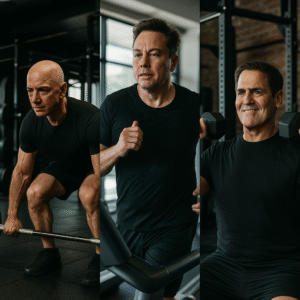Just as we need to look after our bodies, so we all need to take care of our mental health. According to the World Health Organization, one in every eight people worldwide (970 million) live with a mental disorder, and almost one in two (44%) will experience a mental health disorder in their lifetime.
From TV celebrities to royal family members, mental health conditions can affect anyone at any age and at any time. They can stretch from days to decades. The good news is that physical activity can help.
Countless studies show the benefit of exercise for mental health. People who move more report higher levels of wellbeing and lower levels of stress and anxiety.
It’s more than just about your home life, too, as more employers are learning how to support employee mental health through physical activity every year.
Physical activity releases those feel-good hormones that improve your mood and give you more energy. It also helps you sleep better; we all know how poor sleep can affect your mood.
The natural anti-depressant nature of exercise
Exercise is so beneficial in treating mental health problems that at the start of 2023, researchers from the University of South Australia (UniSA) said it should be the first choice treatment for depression and other common mental health conditions.
In one of the most comprehensive research reviews to date, this considerable study published in the British Journal of Sports Medicine confirmed that physical activity is highly beneficial for improving symptoms of depression, anxiety and distress.
In fact, the findings show that exercise is 1.5 times more effective than counselling or the leading medications in managing depression.
And it doesn’t take long to take effect, either. The research showed that exercise interventions lasting 12 weeks or less effectively reduced mental health symptoms.
What type of exercise makes a difference to mental health?
According to UniSA researchers, all types of physical activity and exercise benefit our mental health, from walking and resistance training to Pilates and yoga.
But the research did show that higher intensity exercise, those sessions when you are at the upper end of your maximum heart rate and hitting the yellow and even the red zones had more significant improvements for depression and anxiety. Follow this link to learn more about heart rate zones. Longer workouts had more minor effects compared to short and mid-duration bursts of physical activity.
A ground-breaking report by the John W. Brick Mental Health Foundation (JWB) in 2022 reviewed over 30 years of published research on the link between physical activity and mental health. It found that combining strength training with cardiovascular exercise had more mental health benefits than either exercise alone.
The report also showed that mindfulness-based activities like yoga and tai chi, though they can be lower intensity forms of movement where you are primarily in the blue and green zones, deliver more mental health benefits than walking.
And team sports, cycling and aerobic or gym workouts are the top three forms of exercise associated with over 20% fewer “poor mental health” days per month.
How much exercise is enough to benefit your mental health?
The World Health Organization’s guidelines encourage people to do 150 minutes of moderate-intensity or 75 minutes of vigorous-intensity physical activity a week, which equates to 1300 Myzone Effort Points (MEPs) a month.
The JWB report found we should be doing three to five 30-45-minute moderate to vigorous weekly exercise sessions for optimal mental health benefits – matching the WHO physical activity guidelines.
People who hit this sweet spot have better mental health than those who exercise under three times a week. Interestingly, the research shows they also have better mental health than people who work out more than five times a week.
It shows that more exercise isn’t always better – don’t underestimate the importance of rest and recovery.
Where is the best place to exercise for mental health benefits?
The beauty of heart rate wearables like Myzone is that you can exercise wherever you want and still track your activity.
More and more evidence shows the benefits of exercising outdoors for your mental health. Being active in the fresh air, and especially in nature, reduces stress and anger.
This “green exercise” can also decrease levels of anxiety and depression, while the natural light can really help people who suffer from seasonal affective disorder (SAD).
From boosting your mood and improving self-confidence to relieving tension and enhancing your mindfulness, exercising in mother nature really is an all-around winner for our mental health.
However you like to exercise, get moving this Mental Health Awareness Month to boost your body and mind.
Source: Myzone








